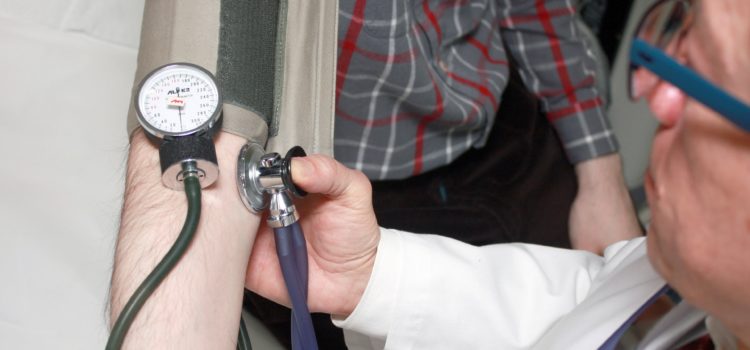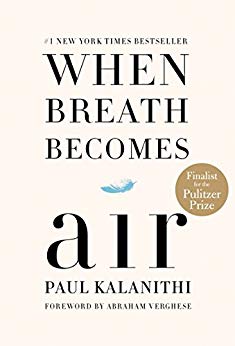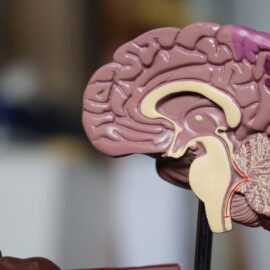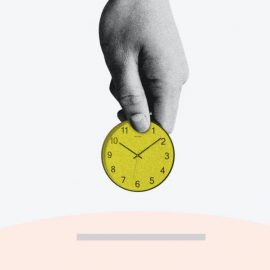

This article is an excerpt from the Shortform summary of "When Breath Becomes Air" by Dr. Paul Kalanithi. Shortform has the world's best summaries of books you should be reading.
Like this article? Sign up for a free trial here .
What makes someone a good doctor? Do you think doctors can impart wisdom about life? What can you learn from books about doctors?
Paul Kalanithi believed doctors could impart wisdom about life. After his diagnosis, Paul Kalanithi set to writing a memoir about his experiences as a doctor, and his views on life and death. When Breath Becomes Air is a book about the meaning of life, and also became one of the defining books about doctors and their role as gatekeepers.
Shortform note: This article and our summary of When Breath Becomes Air is written in a way that allows you to share in the experience provided by the memoir.
Simply reading about the content of the story seems insufficient in expressing the emotional journey. To really provide you with the sensation this book creates, we wrote in the first person, using a voice similar to his. We highly recommend reading the original book for the full experience. Reading the words coming directly from him is a powerful experience we can’t replace.
Lessons on Life and Death as a Doctor
Shortform note: In books about doctors, you often see doctors writing about their high-stakes experiences. In Paul Kalanithi’s memoir, he is careful to reflect on life and death, and his thoughtful approach helps form on of the books about doctors that truly changes your perspective.
In those first two years of med school, I saw how simple it was to view the work as merely that—work. But with the help of my girlfriend, Lucy, I came to see that every aspect of science correlated with an aspect of life. A wavy line on an EKG wasn’t just a heartbeat, it was life coursing through a body.
My comprehension of life, death, and meaning was sharpening. I recognized that the human relationality I’d pondered so often during my previous studies was exemplified in the relationship between doctor and patient.
The pressure on me was light. I was meant to observe and assist the residents and nurses when asked. But inside, the pressure was great. That I might be thrust into the void between life and death, be called upon to deliver a child on my own, was terrifying—more so because failure in this new reality equated to death.
It occurred to me that a keen knowledge of medicine wasn’t sufficient. I would have to gain wisdom, or a moral intelligence, to walk that fine line between life and death.
The fourth year of medical school brought decisions about specialties. Many of my classmates were selecting less-intense specialties, those with better hours, more money, and less stress. In those specialities, the responsibility for life was low.
I opted to choose neurosurgery, one of the most demanding specialties there is. My decision was motivated by an experience I had witnessing a pediatric neurosurgeon discussing a child’s tumor with his parents. I listened as he transitioned from physician, detailing the medical implications, to companion, respecting the personal, moral implications and guiding them through their fears.
I saw how the parents, distraught and frightened, were able to find emotional stability and fortitude for the journey that lay ahead. I realized that life, death, and meaning were issues grappled with more often than not within the context of medicine, but beyond that, there were existential factors at play. The body is an organism that will eventually succumb to physical laws, but the meaning encompassed in that body takes on its own trajectory.
Thus, neurosurgeons treat not only the brain, but also the spirit of the person. Every procedure affects the organism and the identity, and this latter aspect must be considered. The judgment call required of the doctor, then, is not simply about whether the physical life can be saved. We must also contemplate the quality of the life saved. Patients are confronted with the meaning of life, and doctors can help provide the facts to help them discover the answer.
This field would not only force me to confront the questions I’d been asking since undergrad, but also place me squarely in the space where the answers could be found.
The surgical resident rotation was intense, and the schedule started to wear on me. We were working endless hours, sometimes one hundred a week, and it seemed like the work was never done.
Some couldn’t hack it. They crumbled from the pressure or didn’t know how to accept the culpability involved and left the program. The weight of the responsibility was immense, and as my skills improved, my responsibility increased. Determining the likelihood of survival was matched by the need to determine the viability of survival. Saving a patient meant saving the patient’s ability to not simply exist, but to live. Doing otherwise felt like a bigger catastrophe than death.
Neurosurgery was my avenue to understanding the intricacies of death as much as the connection between the brain and the mind. I’d thought being on the frontlines of death would change me, make me understand what it meant to live and begin living better. Certainly, if one is confronted with life and death decisions day in and day out, some sort of awakening must follow.
Instead, I started to wonder if my role as gatekeeper was normalizing the scenario. Or, perhaps, it was keeping me at a safe distance from the battle, like a general atop a horse on a hill. I was around death, near dying patients. I was there to witness their greatest moment of grief and suffering. But I wasn’t fighting next to them—just organizing and observing the fight. My life went on the same. I was forming relationships with others on the outskirts, bonding over our duties to the dying. I had found a way to adapt my baseline of normalcy to the environment around me.
Shift in Perspective
Shortform note: Many books about doctors cover the traumatic first experiences of doctors who lose patients. For Paul Kalanithi, those experiences included the loss of a friend, and helped him shift his perspective about what is best for both doctors and patients.
This perspective became clear one night after a motorcycle trauma came into the ER. I was in the middle of “dinner”—an ice cream sandwich and soda. I stashed the items on the side of the trauma room and went to work.
It became clear the motorcycle patient would not survive, even if we could get him to surgery. After we pronounced him dead, I left the room. But a second later, I remembered my discarded dinner. I snuck back in and retrieved the items, saving the ice cream sandwich before it became a melted mess in front of the body that could not be saved. At that moment, I contemplated whether my morality had gotten lost amidst my professional acumen.
Everything changed after the news of a friend’s death reached me. I’d known Laurie in medical school. She’d made it through surgery after being hit by a car but died the next day. I didn’t ask any questions or for any particulars about her case. The time when a car accident was just a car accident was gone. A car accident now conjured all the pictures I had in my head of procedures, processes, and possible injuries that would lead to death. I had all the information I needed as a doctor to understand Laurie’s death. I understood it as I would any other patient.
Each moment that I had failed to recognize the patients I saw as people, as priorities, as suffering individuals worthy of empathy and focused care, flooded my mind. I had moved through patients’ pain, worries, and diagnoses like a worker on a factory line. I felt crushing guilt. I had failed to recognize the significance of the situation and their lives. I was turning into Tolstoy’s cliche of a doctor: mechanically treating disease without noticing the individual.
Human relationality was once of great importance to me, but I had forgotten it amid the harried world of diagnosis and prognosis. It wasn’t sufficient to just be an excellent surgeon. I had to be an excellent physician, which meant guiding those in my care, including families, to a place where tragedy can be comprehended.
This role, the pastoral one, became my highest priority, for often the families are equally blinded to delicate facets of life and death. They look at their sick or injured loved one and see the person they were, the life they lived, and the memories they shared. It was a sight of the past, whereas I understood the realities of the future.
I could use this knowledge to help these families understand that, with severe brain trauma, the body in front of them no longer contained that image from the past. The questions were all about the future: whether their loved one could have one and whether they should. Because only the family knows for certain if a dramatically altered quality of life would be worth it, or whether death would be preferred. It was their decision, and I wanted to serve as an usher to help them make it.
In this new role, I no longer spewed risks and statistics like an auctioneer. I became a sort of ambassador or companion. I met the patients and families at the apex of their grief and provided what I could to help them see the best way through it.
I was taking full ownership of every aspect of my patients’ care by this point. I thought about my father and the way he fostered trust and real connection with his patients. I was motivated to do the same.
Human Connection as a Priority
Shortform note: Many books about doctors try to understand the doctor-patient relationship. Paul Kalanithi has clearly read many books about life and philosophy, and books about doctors; through his knowledge and experience, Paul Kalanithi forms his own philosophy about patient care.
I felt this type of work was particularly important for the neurosurgeon, because brain injuries, more than most, confound reason. The body can still be alive with the help of machines—the chest still moving up and down, blood still circulating—even when the patient is brain-dead. Death with a beating heart is not an easy concept to take in.
I had come to understand two things about informing patients of diagnoses and prognoses. First, statistics have no place in the doctor-patient relationship. And second, being honest about the gravity of the situation is necessary, but so is allowing for hope. For these reasons, I determined that approaching diagnoses a spoonful at a time was the best way forward.
For instance, a patient was referred to me after an MRI, but no one had informed her what the results showed. Doctors often push the task of delivering hard news to another. I would not be that kind of doctor, not anymore at least.
I could tell right away from the scan that this woman had an aggressive form of brain cancer. I was careful when delivering the news, allowing the emotional states of the woman and her husband to guide my words. As soon as they heard the words “brain cancer,” they would likely not hear anything else.
Human relationality requires honesty, but honesty doesn’t mean overwhelming patients with a giant bolus of mortality. It is not uncommon for patients and families to tune out and lose their tongues after receiving bad news. At these moments, all there is to do is take their hand and guide them as far as they can go until they’re ready for more.
Yet, making human relationality a priority was difficult, and doing so had consequences. Meeting patients in the foggy space between the past and future was emotionally taxing. I didn’t realize how much so until I was driving home one night in my third year and realized I was crying. But still, I never questioned the work or the value in it. The call to be a neurosurgeon—as it is a calling—is a virtuous endeavor, not simply because of the lives we are able to save, but because of the identities we are tasked to maintain.
Before any surgical procedure was performed, I needed to get a sense of that person’s identity. I needed to know their mind, what they valued, what they lived for, what they could live without, and what they couldn’t. Taking on that burden is a costly venture, for success in surgery is not guaranteed. And in those moments, the ones where we fail, the guilt is immeasurable.
Shortform note: Paul Kalanithi’s memoir is a touching memoir and one of the most fascinating books about doctors. In When Breath Becomes Air, Paul Kalanithi’s ideas about doctor and patient care and how doctors serve as gatekeepers between life and death form one of the most interesting and moving books about doctors, while also proving itself to be a beautiful and profound memoir about one person’s life.

———End of Preview———
Like what you just read? Read the rest of the world's best summary of Dr. Paul Kalanithi's "When Breath Becomes Air" at Shortform .
Here's what you'll find in our full When Breath Becomes Air summary :
- How Paul Kalanithi discovered he had cancer
- How Paul coped with his cancer until his very end
- How Paul's wife dealt with his death and found the strength to continue






